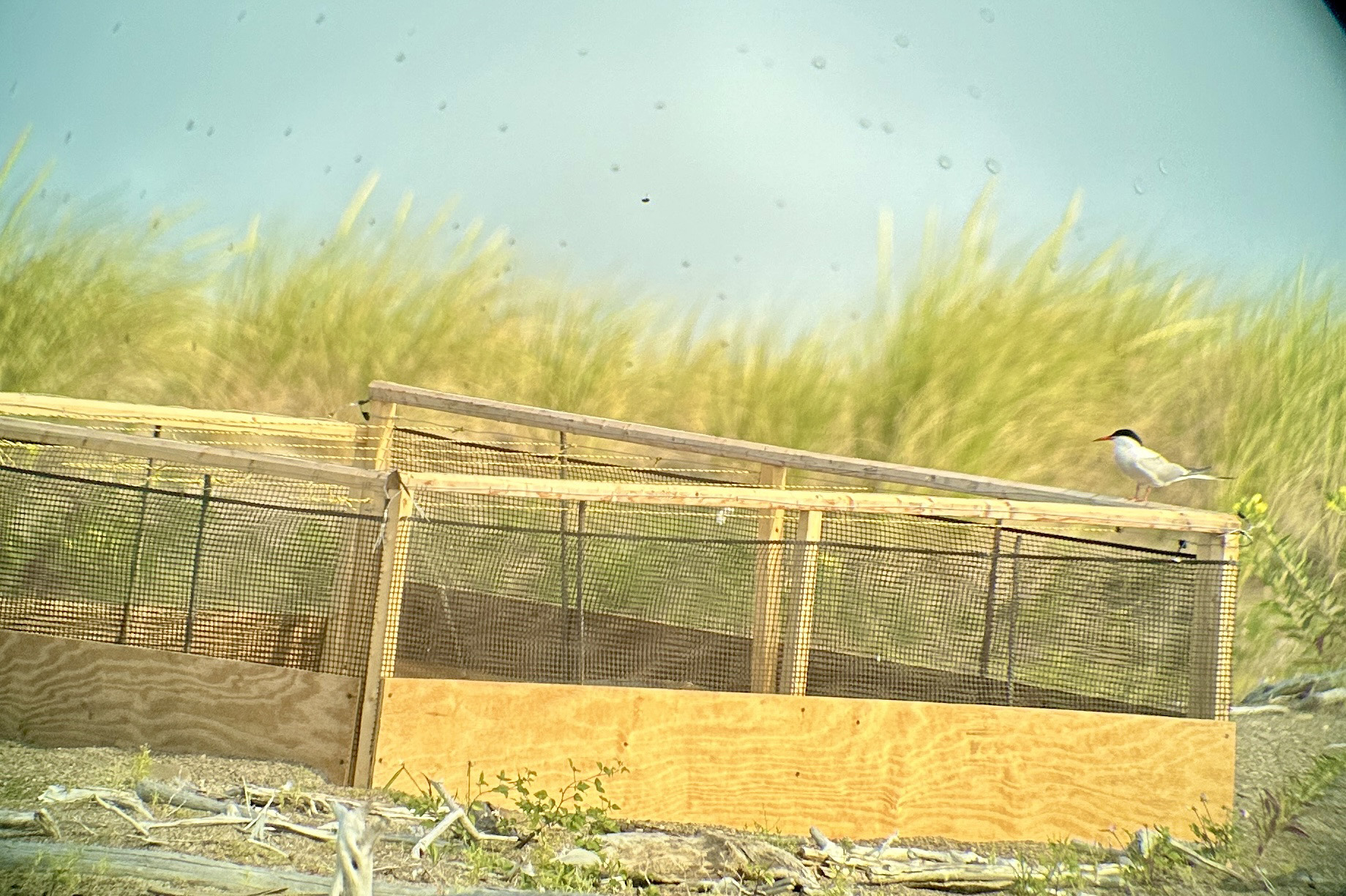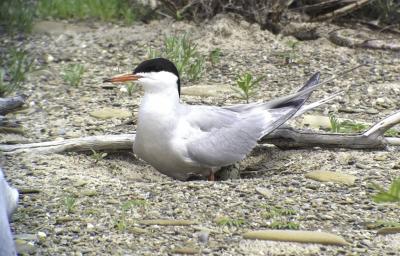It Was Their Tern!
Common Terns make a comeback at Presque Isle State Park
On the morning of Aug. 17, something remarkable occurred at Gull Point at Presque Isle State Park. Two juvenile Common Terns (Sterna hirundo) left their nest area and flew free for the first time. It is noteworthy because the last time juveniles fledged successfully in that location was sometime in the mid 1960s — more than 60 years ago. It was an exhilarating moment.
This triumph didn't just happen on its own. It was years in the making and the result of hard work by a team of dedicated people over the course of the past three decades. Many agencies are involved in keeping the habitat favorable for nesting at Gull Point and stewarding efforts to protect the birds who now nest there in the summer. Besides Erie Bird Observatory (for whom I work), U.S. Fish and Wildlife Service, the Pennsylvania Game Commission, Pennsylvania Department of Conservation and Natural Resources, the Western Pennsylvania Conservancy Natural Heritage Program, the U.S. Army Corp of Engineers and U.S. Department of Agriculture all contribute their expertise to the Piping Plover and Common Tern Recovery Team.
Besides being a favorite recreation location for thousands of human visitors each year, Presque Isle State Park is also a Pennsylvania Important Bird Area because it hosts several endangered and threatened nesting bird species and provides critical migration stopover habitat for numerous bird species each spring and fall.
The park's history as a nesting site for Common Terns reaches back to the early 20th century.
Clyde Todd in his 1940 book Birds of Western Pennsylvania reported that Common Tern were nesting at Presque Isle in 1904. By 1927 he says a small colony of 25 nests was established and by 1931, a colony of more than 125 nests stretched a quarter mile on the eastern end of the park. In more recent times, various sources report Common Tern nesting at Presque Isle as late as the mid 1960s. Those sources do not mention, however, if any chicks fledged. The date of the last known successful fledge is unknown, but the mid 1960s is the benchmark for known nesting.
By 1985, though, the uptick in recreational beach-going by humans increased dramatically and the terns, like their fellow ground-nesting birds Piping Plovers, were especially impacted by frequent disturbances as Gull Point was a favorite destination for boaters looking for a place to enjoy the beach. The terns were declared extirpated, meaning they no longer existed as a nesting species in this location. In 1993 Gull Point was closed as a sanctuary and Common Terns, once again, began attempting to nest and in 1999 the species was upgraded to an "endangered" status after a nest was discovered.
Since then, unsuccessful nesting occurred in 2012, and at a high point in 2015 Gull Point hosted a small colony of eight nests. Unfortunately, the eggs from those nests were taken by predators or storms before hatching.
In 2022, one pair nested and the eggs reached hatch — a new milestone — but the chicks were only seen for a few days.
The conservation team was determined this year. Again, one pair nested, and the three eggs reached hatch but like before, the chicks also disappeared after a few days. When they renested in a different location, the PA Game Commission — that has jurisdiction over state-listed endangered species — decided to try a new approach by erecting an exclosure around the newly laid eggs.

This "exclosure" was constructed by the Pennsylvania Game Commission as an experiment to protect the eggs, hatchlings, and eventual fledglings from predators on the ground and in the air. (Contributed photo)
Using a model developed for a larger tern colony at Presqu'ile Provincial Park on Lake Ontario, the Game Commission staff built a scaled-down version for use around a single nest. The structure was installed over a four-day period to give the adults a chance to get used to this intrusion into their territory. This structure, with solid sides topped with mesh, held taut strings across the top. The adult birds could come and go through the strings, but they also, along with the sides, protected the eggs and, later, chicks from both ground and aerial predators. But the structure was not without vulnerabilities. Common Terns are colonial nesters, gaining strength in the mutual protection of the colony at large. The adults of a single nest don't have the comfort of nearby terns to count on when a predator shows up and they are prone to abandon if they feel disturbed.
Patti Barber, endangered bird biologist for the Game Commission said, "There was a risk, constructing an exclosure around the nest of a single pair had never been attempted because terns aren't as tenacious without others nesting nearby. The adults might abandon the nest altogether. However, given the history at Gull Point, the chance of a successful nest without the exclosure was extremely low and the potential of a successful nest balanced the risk of abandonment with the exclosure."
These tenacious terns did stand by their eggs and chicks until the fateful morning when the young terns were strong and confident enough to fly out of exclosure. It took several attempts for each of them but eventually they made it past the top strings and onto the beach. The parents stayed nearby and chased any other birds getting too close. Eventually, they both tested their wings for their first free flight. My heart swelled to watch these birds fly.
This one success does not mean it's time to delist these birds as endangered in the state, but the team is making meaningful progress towards the conservation goal of "successful fledging of chicks from at least one nest per year by 2025," as outlined in The PA Game Commission's Wildlife Action Plan of 2015-2025.
Mary Birdsong is co-founder and lead shorebird monitor for Erie Bird Observatory. She can be reached at mbirdsong@eriereader.com




